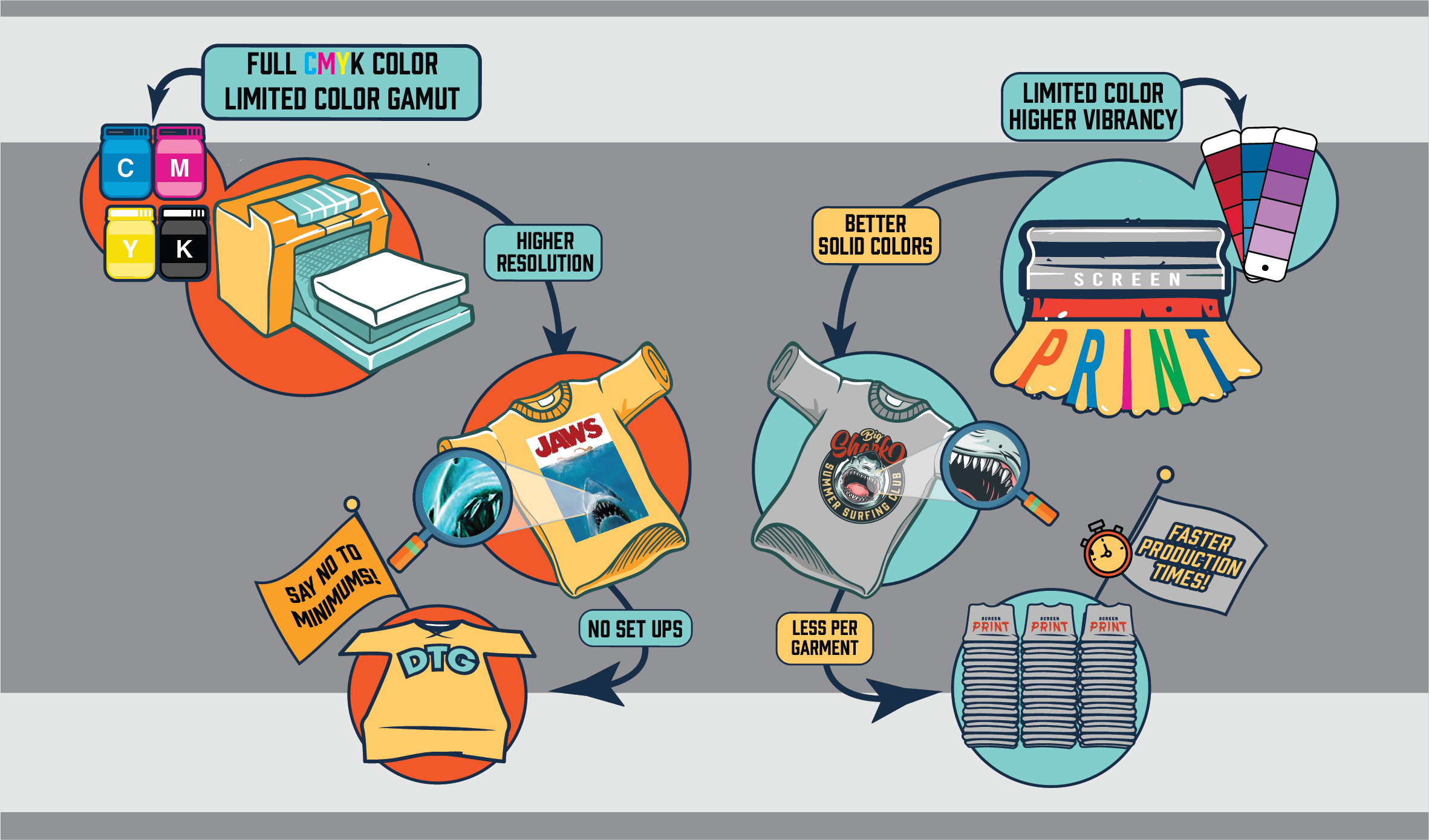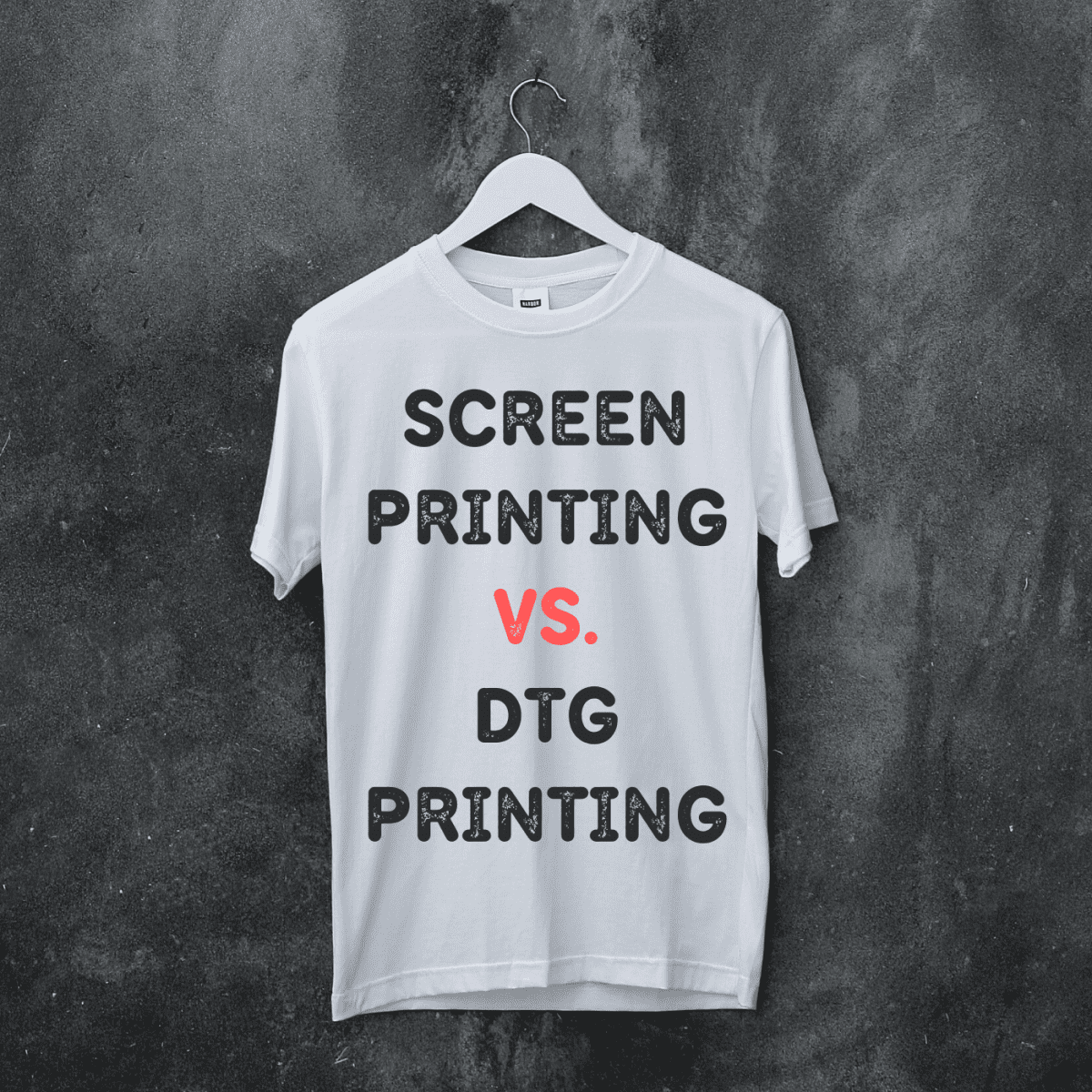Little Known Facts About Tx Tees.
Little Known Facts About Tx Tees.
Blog Article
How Tx Tees can Save You Time, Stress, and Money.
Table of ContentsFascination About Tx TeesThe Ultimate Guide To Tx TeesWhat Does Tx Tees Do?The 4-Minute Rule for Tx Tees3 Easy Facts About Tx Tees ExplainedSome Known Incorrect Statements About Tx Tees Fascination About Tx Tees
Include up various other costs, like the number of utilities it takes to run the shop and the expense of ink and solution per style. Take the print below.The emulsion ought to only be a few cents considering that you 'd just need to layer one display for this task. So just how much should you charge per t-shirt to make an earnings? Typically, printers attempt to make up to 45% earnings on a print work. Right here's a table to assist you establish that: total cost per product percent of preferred revenue as a decimal (example:.25 or.45) revenue made per product per task Now let's talk concerning the profitability of DTF.

With DTF, you can print a handful of tee shirts, or just one. Both display printing and DTF have their niches in the globe.
Getting My Tx Tees To Work
The ideal means to understand? Ask around and see what print stores like your own are doing. custom cap printing. Attempt both out and see which you like far better
When you're choosing what kind of printing technique to use for printing your artwork designs on your garments, it's essential that you understand the distinctions between these two methods so you can make best use of results while reducing expenses. Display printing is one of the most typically utilized strategy for printing designs on textiles.
DTG printing is additionally recognized as spot or direct to garment printing because it prints only what is required rather than making a display as screen printers do. http://tupalo.com/en/users/6453236. Screen printing functions by screen filler squeegee screen printing ink screen mesh screen, then transferring the image to garment utilizing warm and/or stress
The DTG printer makes use of special dye-sublimation inks that are used into a pre-designed picture by a digital printing system. The inks end up being component of the fabric, permitting vibrant shades and extraordinary detail. It's likewise recognized as area or straight to garment printing since it publishes just what is needed instead of making a display as display printers do.
A Biased View of Tx Tees
Initially, it's much faster - you can publish a fullcolor picture in mins, instead of hours for display printing. Second, there's no set up time or costs included - you can publish any kind of style you such as, without having to produce a display first. Third, there's no waste - because screen printers screen print one design at once, they have to screen each shade individually.
The paper is really pricey and can just be used once. Once it's published on, it has actually to be discarded. - The first acquisition price is reduced than the upfront investment of DTG printers- You can publish multi-color styles one screen each time as opposed to having to publish each shade individually like DTG printing.

The Tx Tees Statements
Instead of making use of screen mesh as display printers do, dye sublimation printers make use of laser technology to transfer your pictures onto garments or paper. A warmth process moves the color from its solid-state straight right into the gas phase which in turn fuses it onto textile substratums when they are rapidly heated up to high temperatures under high stress.
Sublimation printing is environmentally friendly. It utilizes much less water than screenprinting, and because it doesn't involve the usage of harmful solvents, it's risk-free for all sorts of garments. The color sublimation inks are also odor free when cured, unlike screen printers that use unsafe chemicals during the display printing process that leave behind an unpleasant odor.
They also conserve money on costly devices like exposure units considering that color sublimation printers do not require a UV exposure system or a flash cure oven that is commonly utilized in screen printing (custom t-shirt design). What is direct to garment printing (DTG Printing)? DTG printing is a digital screenprinting procedure that prints straight onto fabric using specialized inkjet printers
The 20-Second Trick For Tx Tees
DTG printing provides lots of advantages over traditional screenprinting, including the capability to print photo quality images, greater color vibrancy, and the ability to publish layouts on darker textiles. DTG printers function by heating the fabric ink till it develops into a gas. The gas after that permeates the textile, bonding with the fibers to develop a permanent print.

Display printers merely prepare their screen after that begin publishing up until they run out of item or ink.- There is a vast variety of seasoned display printers all over the world, which can be helpful for novices. - It's a slower process - display printers usually have to wait on the ink to completely dry prior to they can print the next color- Screen printers need manual work, so there's a greater knowing curve and it takes longer to produce a top quality design- Screen printing isn't as exact as DTG printing, so you may get some "blood loss" of shades from one component of the picture onto an additional if not done appropriately.
7 Easy Facts About Tx Tees Shown
Rather of using screen mesh as screen printers do, dye sublimation printers utilize laser modern technology to transfer your pictures onto garments or paper. A heat process transfers the color from its solid-state directly right into the gas phase which subsequently merges it onto textile substrates when they are rapidly heated up to heats under high pressure.
Sublimation printing is environment-friendly. It makes use of much less water than screenprinting, and since it does not involve the usage of unsafe solvents, it's safe for all types of garments. The color sublimation inks are also odor-free when treated, unlike display printers that use dangerous chemicals throughout the display printing procedure that leave an unpleasant odor.
They also conserve money on expensive devices like direct exposure devices because dye sublimation printers do not call for a UV direct exposure unit or a flash cure oven that is typically used in screen printing. What is straight to garment printing (DTG Printing)? DTG printing is an electronic screenprinting process that publishes directly onto textile using specialized inkjet printers.
Not known Factual Statements About Tx Tees
DTG printing provides lots of advantages over traditional screenprinting, including the capability to publish photographic high quality pictures, greater shade vibrancy, and the capability to print styles on darker materials. DTG printers function by heating up the fabric ink till it develops into a gas. The gas after that penetrates the fabric, bonding with the fibers to develop an irreversible print.
Report this page